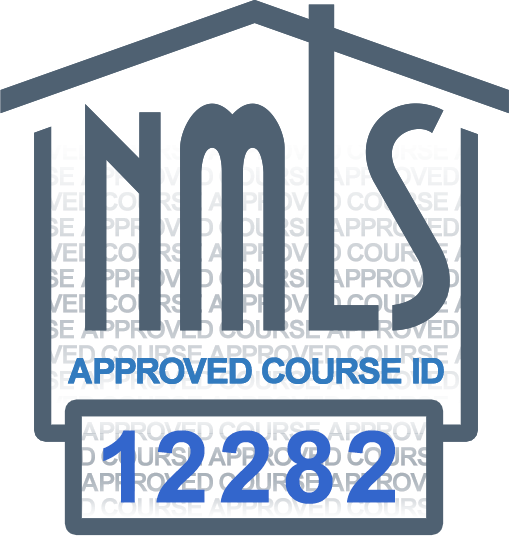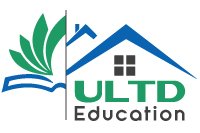20 Hour – Mortgage Loan Originator SAFE Comprehensive Course – #12282
20 Hour – Mortgage Loan Originator SAFE Comprehensive Course – #12282
This course covers topics required by the SAFE Act: Federal lending legislation (3 hrs), ethics (3 hrs), and nontraditional mortgage products (2 hrs). Also included are 12 hours of electives on key concepts, including financial disclosure, privacy protection, consumer I.D., and predatory lending protection laws; government loan programs; the SAFE Act; financial calculations; conventional loans and financing; loan processes, products, and finance instruments; and the Uniform State Test.
Upon completion of this course, students will be able to:
- Identify historical events that shaped today’s mortgage industry.
- Contrast the primary mortgage market and secondary mortgage market.
- Identify entities involved in the primary and secondary mortgage markets.
- Identify the regulatory agencies involved in mortgage lending.
- Discuss the seeds of the subprime mortgage crisis.
- Discuss the history of the Dodd-Frank Act and the state of the mortgage market preceding its passage into legislation.
- Identify disclosure provisions of federal laws related to mortgage lending.
- Identify regulations to protect the privacy of consumers.
- Describe regulations that address predatory lending.
- Define regulatory requirements for mortgage loan originators.
- Define the various roles mortgage professionals play.
- Distinguish between pre-approval and pre-qualification.
- Identify the steps in the loan process.
- Discuss the information necessary to complete a standard loan application.
- Identify criteria for evaluating borrowers.
- Calculate housing and debt-to-income ratios.
- Explain credit scoring.
- Contrast a financing instrument with a security instrument.
- Describe advantages and disadvantages of mortgages and trust deeds.
- Identify typical mortgage clauses.
- Identify the characteristics of a conventional loan.
- Define amortization.
- Identify different types of conventional loans.
- Recognize the use of private mortgage insurance.
- Contrast conforming and nonconforming loans.
- Describe methods of secondary financing.
- Identify basic qualifying standards for FHA-insured loans.
- Define the use of upfront mortgage insurance premiums.
- Recognize different FHA loan programs.
- Identify basic qualifying standards for VA-guaranteed loans.
- Define eligibility and entitlement for veterans.
- Recognize different USDA loan programs.
- Describe the advantages and disadvantages of buydown plans.
- Identify the elements that make up an adjustable rate mortgage.
- Describe the purpose of construction loans, including the three most common disbursement plans.
- Identify the characteristics of a reverse mortgage.
- Identify the factors that define a subprime loan.
- Describe the agency guidelines on lending and subprime loans.
- Contrast the various types of alternative financing.
- Identify RESPA and the regulation on payment of kickbacks and unearned fees.
- Recognize the responsibilities of mortgage loan servicers and the documentation they must provide according to Section 10 of RESPA.
- Describe disclosure provisions of federal laws related to mortgage lending.
- Describe the disclosures implemented by Regulation Z: The Loan Estimate and the Closing Disclosure.
- Identify procedures to protect the privacy of consumers.
- Recognize limitations on lenders’/MLOs’ use of consumer credit information.
- Describe control of credit reporting information.
- Describe requirements for recording consumer credit information.
- Describe regulations designed to address predatory lending.
- Describe the rules for compensation for an MLO and a registered MLO.
- Discuss the rules regarding seller financing of owner-occupied residences.
- Identify licensing requirements and procedures for mortgage loan professionals.
- Recognize education requirements for MLOs.
- Define ethics and discuss the purpose of the codes of ethics.
- Recognize material facts in an advertisement.
- Define the bait and switch advertising strategy.
- List classes that are protected from illegal discrimination.
- Identify scenarios that violate RESPA’s prohibition against kickbacks.
- Recognize indicators of mortgage fraud.
- Identify the participants and their roles in mortgage fraud schemes.
- Identify predatory lending practices.
- Identify the elements that affect the Uniform State Test.
- Recognize the regulatory authority of federal and state mortgage entities.
- Recognize the definitions of components and concepts in the mortgage industry.
- Identify licensing laws and requirements that regulate MLOs and other mortgage professionals.
- Describe compliance conditions and practices that apply to the mortgage industry.
- Identify regulations that prohibit illicit mortgage lending practices.
- Recognize federal requirements for anti-money laundering and recordkeeping by financial institutions.
- Recognize regulations that address mortgage assistance programs and financial records.
- Identify different types of financial payments.
- Recognize mortgage loan-to-value conditions.
- Determine mortgage closing costs and prepaid items.
- Identify the components and requirements of a successful loan closing.
Describe appropriate and effective methods of dealing with challenging scenarios in the MLO’s daily routine.

